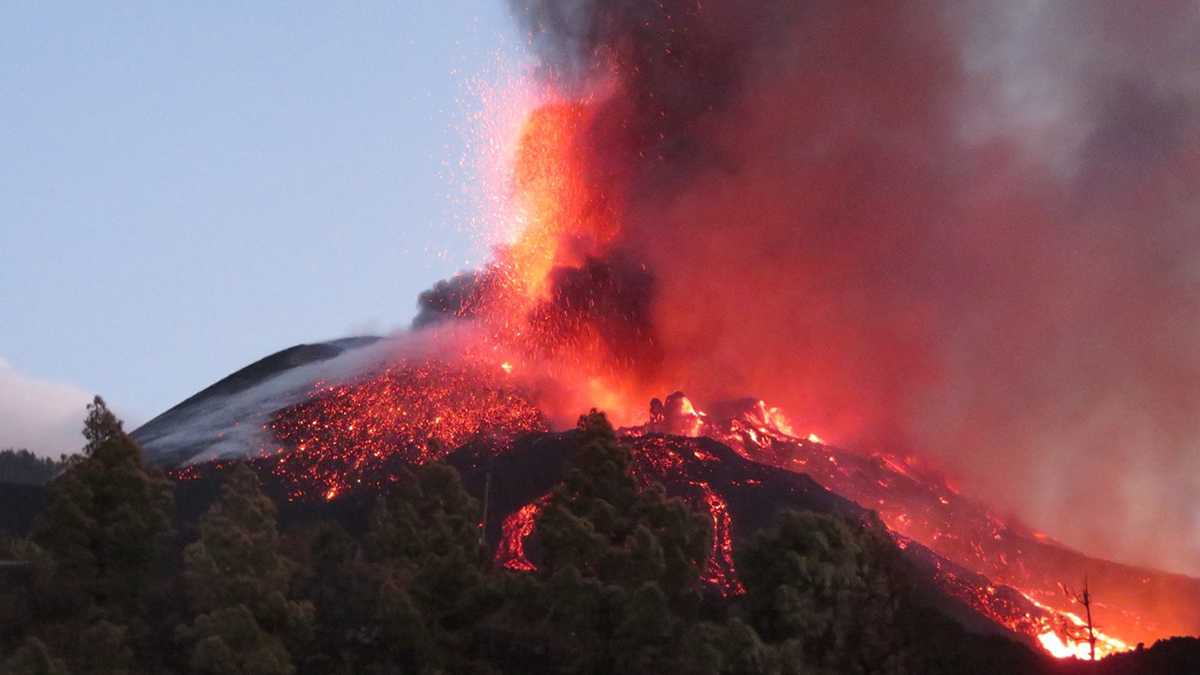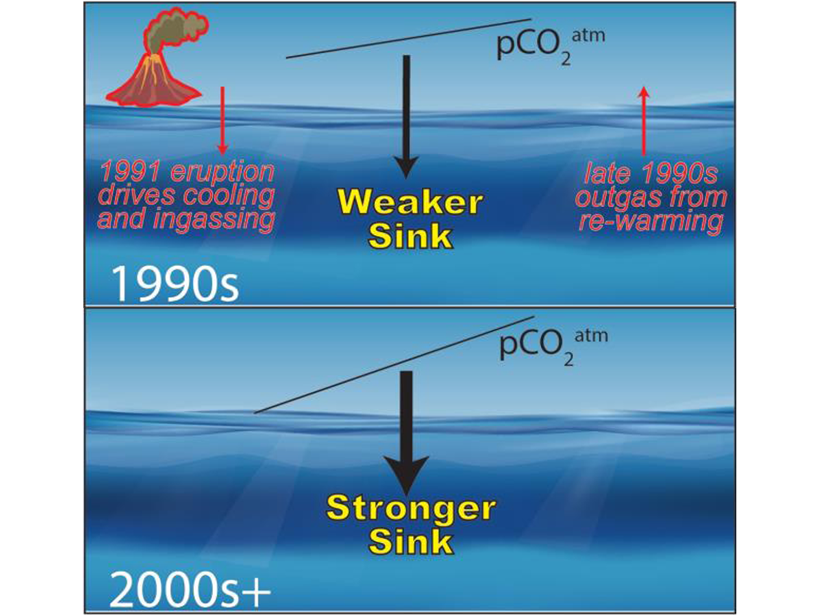Researchers estimate the mass of volcanic products that erupted above sea level from 1980 to 2019 by volcanoes worldwide and the average eruptive rates of each magmatic province.
Mount Pinatubo
Posted inScience Updates
Anticipating Climate Impacts of Major Volcanic Eruptions
NASA’s rapid response plan for gathering atmospheric data amid major volcanic eruptions, paired with efforts to improve eruption simulations, will offer better views of these events’ global effects.
Posted inEditors' Highlights
Eruption and Emissions Take Credit for Ocean Carbon Sink Changes
A new model explains why the ocean’s capacity to take up carbon was reduced on a decadal scale, by accounting for reduced pCO2 emissions and ocean state changes due to the eruption of Mt. Pinatubo.
Posted inNews
Pinatubo 25 Years Later: Eight Ways the Eruption Broke Ground
From the first rapid assessment of a volcano's history to insights on geoengineering, the 15 June 1991 eruption of Mount Pinatubo changed the way we approach and learn from volcanic hazards.




